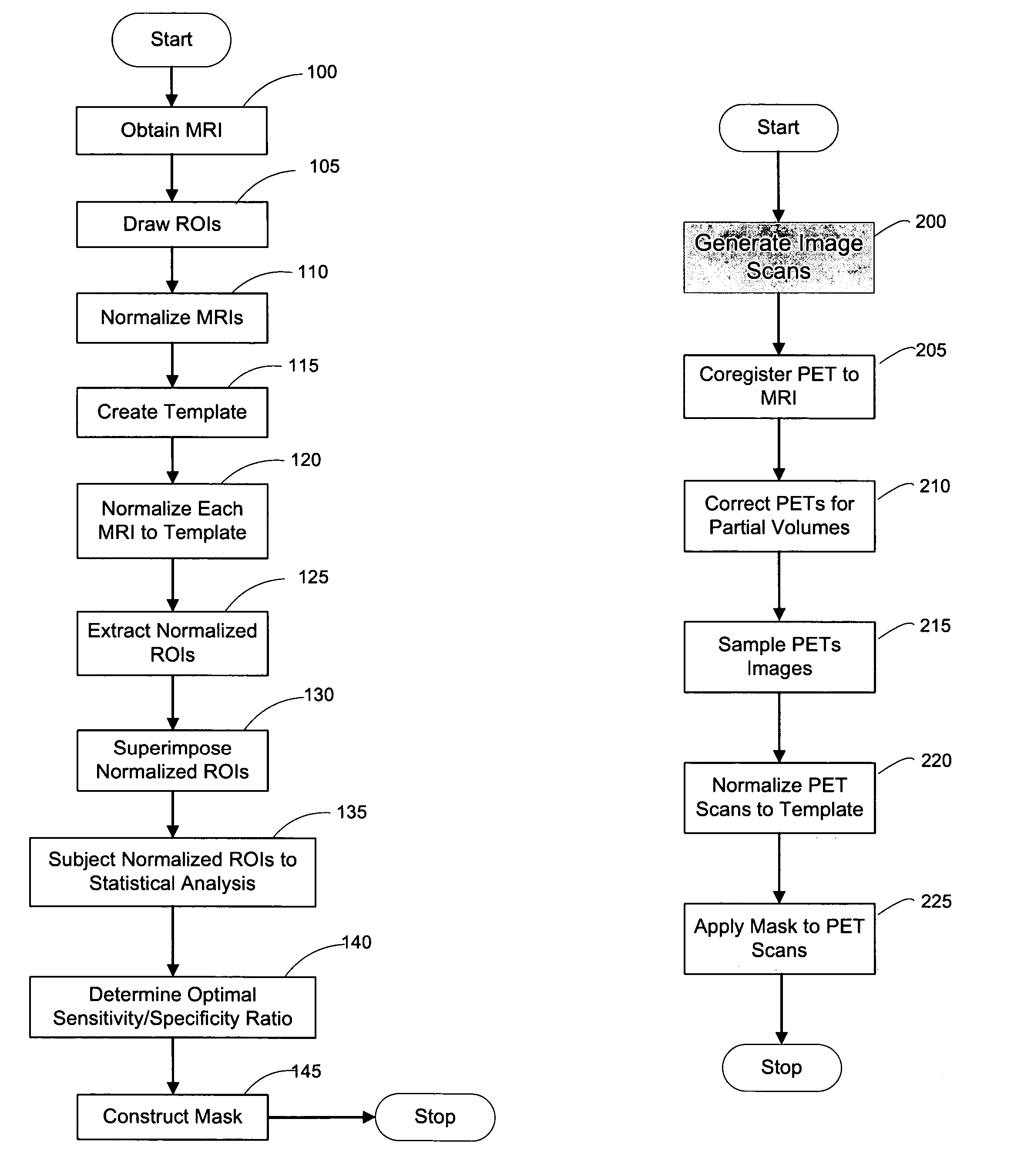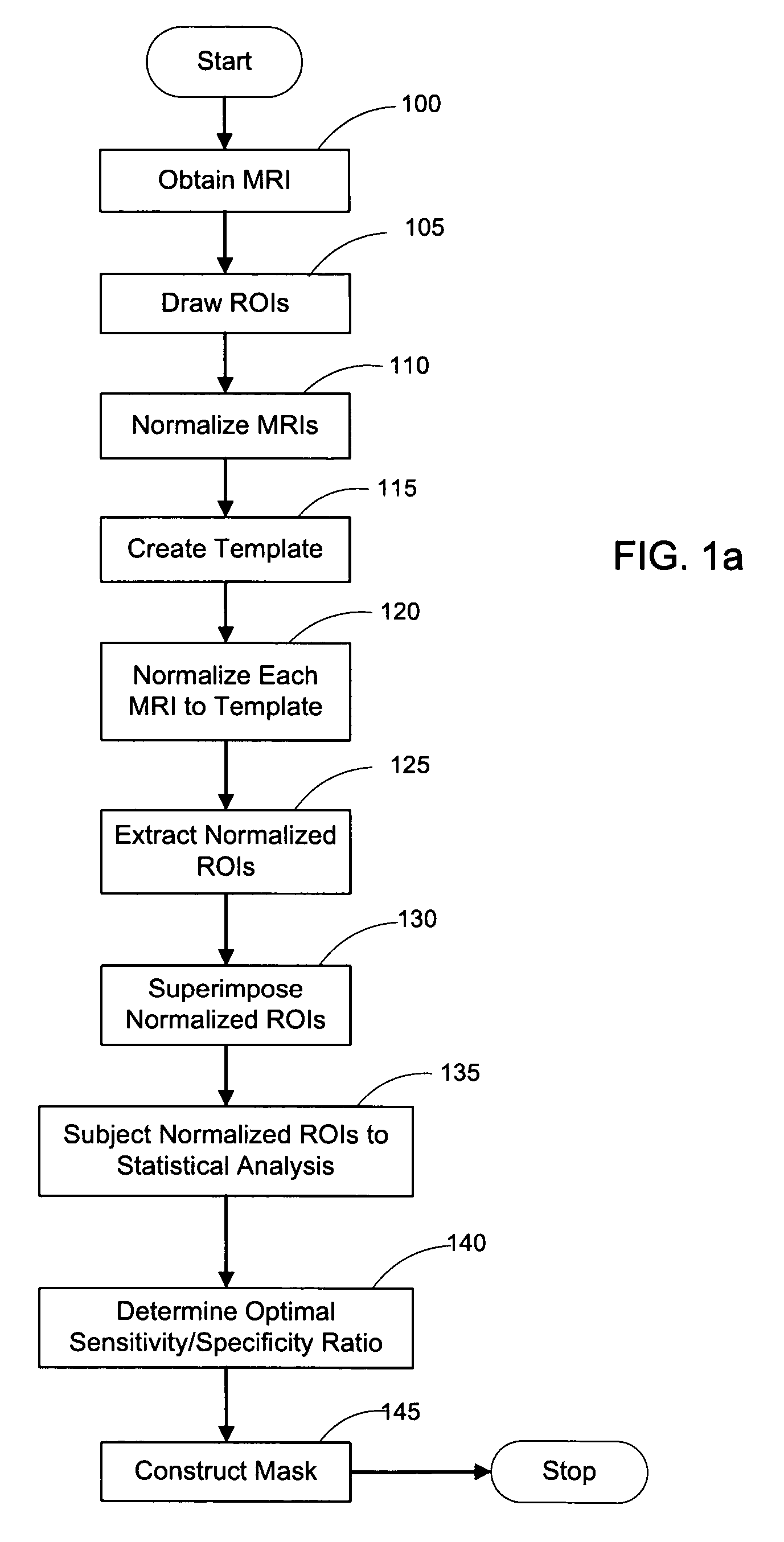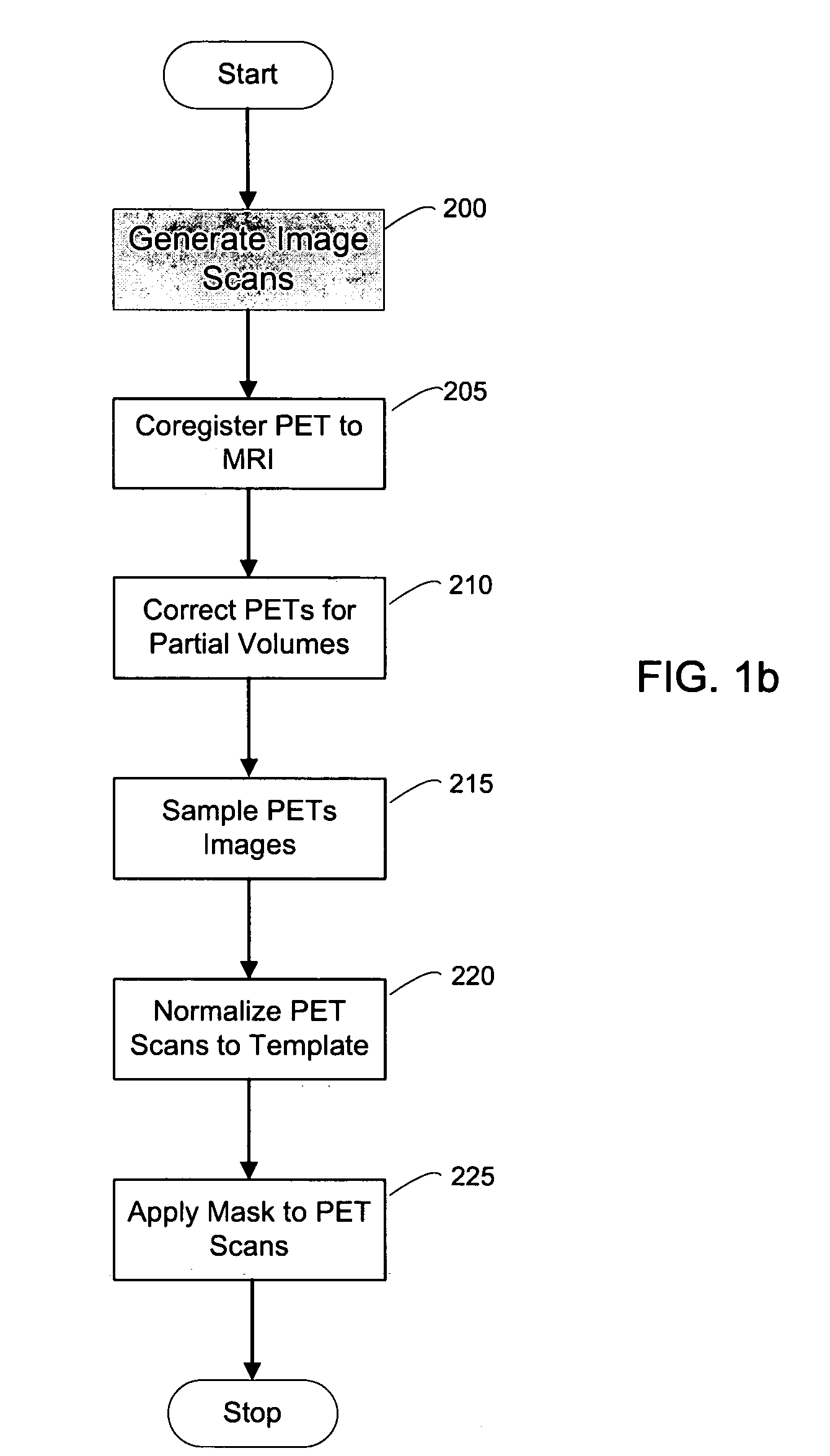Method, system and storage medium which includes instructions for analyzing anatomical structures
a technology of anatomical structure and instructions, applied in the field of method, system and storage medium, can solve the problems of mci-related hippocampal hypometabolism invisible to the human observer, mci-related hippocampal metabolic abnormalities, and the use of cortical hypometabolism in identifying patients with mci is controversial, and achieves good comparability, high intra-rater reliability, and the effect of determining the anatomical validity
- Summary
- Abstract
- Description
- Claims
- Application Information
AI Technical Summary
Benefits of technology
Problems solved by technology
Method used
Image
Examples
first exemplary embodiment
1. First Exemplary Embodiment
Hippocampal Mask (HipMask)
[0053]FIG. 1a depicts a flow diagram of an exemplary embodiment of a method for constructing a HipMask. FIG. 9 depicts an exemplary display of such exemplary method, in which images for the scanned cross-sectional view of a brain is displayed as MRI 10, Hippocampal ROI 20, and HipMask 30. Indeed, the HipMask 30 image can be constructed by utilizing the exemplary method illustrated in the flowchart of FIG. 1. Referencing the exemplary method shown in FIG. 1, after a group of patients of sufficient size are assembled (as discussed below), magnetic resonance images (MRIs) are taken of each patient's brain in operation 100 to create a set of MR scans or MRIs. (The terms “MR scan” and “MRI” are used interchangeably herein.) The MR scanning procedure may employ any scanning parameters that provide a sufficiently precise brain image. Briefly, one embodiment of the present invention may employ MR scans 10 generated by a-1.5 T General El...
second exemplary embodiment
5. Second Exemplary Embodiment
Visual Rating of Medial Temporal Lobes
[0132]A second exemplary embodiment of the method, system and storage medium according to the present invention is provide for evaluating and analyzing brain tissue shown on the PET scans 60. Similar to the first exemplary embodiment, the second exemplary embodiment may be broadly applicable to evaluation and analysis of imaged brain tissue, such as that shown in the PET scan 60.
[0133]For example, according to this embodiment, a standardized MRI scan protocol can be conducted on a set of patients to provide a set of MRIs 10. The MRI scanning procedures have been previously described above, as well as in certain references known to those of ordinary skill in the art.
[0134]For example, the MRI scans may be acquired on a 1.5 T General Electric Signa imager (General Electric, Milwaukee, USA) using a T1-weighted fast-gradient-echo sequence with repetition time=35 ms, echo time=9 ms, and flip angle 60°. Images may be reco...
PUM
 Login to View More
Login to View More Abstract
Description
Claims
Application Information
 Login to View More
Login to View More - R&D
- Intellectual Property
- Life Sciences
- Materials
- Tech Scout
- Unparalleled Data Quality
- Higher Quality Content
- 60% Fewer Hallucinations
Browse by: Latest US Patents, China's latest patents, Technical Efficacy Thesaurus, Application Domain, Technology Topic, Popular Technical Reports.
© 2025 PatSnap. All rights reserved.Legal|Privacy policy|Modern Slavery Act Transparency Statement|Sitemap|About US| Contact US: help@patsnap.com



